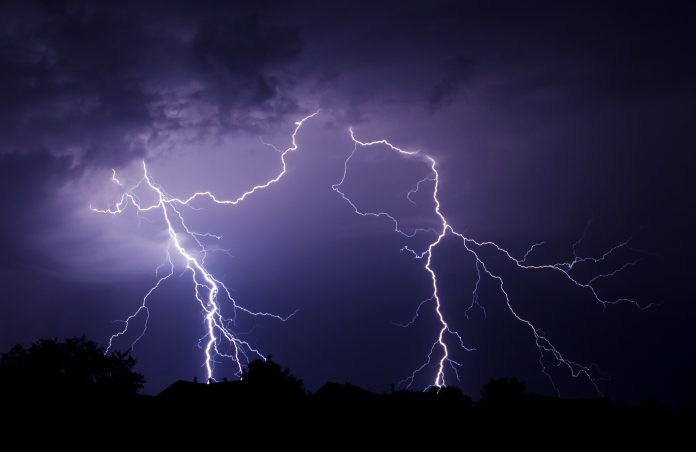
A sky illuminated with impressive strikes of lightning can prove to be a spectacular sight for some, but for the oil and gas community, it can infuse worry and result in asset destruction and even death. Companies across Oklahoma have made great strides in countering lightning’s catastrophic fury.
The risks of lightning on oil and gas facilities
Both direct and indirect strikes and static discharge serve as ignition sources. In fact, the major risks associated with static and lightning discharge include thief hatch fires, tank battery fires, electrical and electronic failure, polychemical and fiberglass tank fires, loadout tank truck fires, as well as communication and control equipment failure.
The importance of protection
Strikes cannot be prevented, but layers of protection are installed to account for it. According to Melissa Rehage, Chief Strategy Officer with Petro Guardian, a lightning protection system functions by providing a reasonably direct, low resistance, low impedance path for lightning current to follow to the ground to prevent property damage, injury, or death.
Rehage stated lightning protection system installations have been utilized by customers managing new acquisitions as well as in newly constructed sites.
“The need is typically identified as being budget based.” said Rehage, “It can also be driven by the insurance company.”
Saltwater is a higher risk
According to Kevin Harder, Director of the Saltwater Disposal Division at Rockwater Energy Solutions, there has been an increase in protecting saltwater facilities in Oklahoma over recent years.
“There was a big push in Oklahoma in 2018 and 2019,” said Harder. “There were records in strength and intensity in lightning strikes.”
Harder indicated saltwater disposal facilities are high risk and prone to lightning strikes. He attributed this factor to the salt in the water carrying an electrical current. He stated that he has also seen an increase in protection systems across the state’s production and oil storage locations.
“Protecting assets pays off,” said Harder. “More and more construction projects in the state are factoring in lightning protection.”
Rehage echoed the same protection statistics.
“The majority of Petro Guardian’s 2020’s protection projects in Oklahoma have been new construction.”
Obviously, 2020’s total number of lightning strikes and asset damage across Oklahoma will be unknown until the end of the year, but Rehage recommends taking the precautions to combat unwanted effects. Protection systems, coupled with lightning strike reports and compliance inspections, are key to protecting Oklahoma assets from future lightning related disasters.














